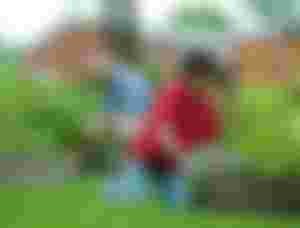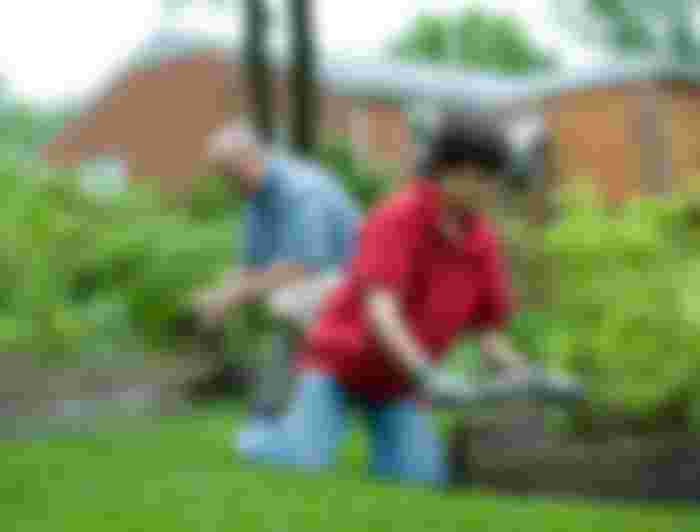METHODOLOGY
This section enumerate and discusses the research methods used in the Determination of Physical Properties of AB Materials – Mass, Volume, Density and Porosity. It provides information on the data collected, wherein it is the criteria inclusion of the study. This section also discusses the methods used to analyze the data.
MATERIALS
Cylinder
Graduated cylinder
Weighing scale
Sand
Container
Calculator
Tabulation sheet or any paper
Pen
PROCEDURE:
In conducting a laboratory activity, the materials, tools and instruments to be used shall be borrowed and prepared prior to the day of the experiment. Prepare at least two (2) sample in each type of AB materials available in your community, type 1 are the materials that is heavier than water and type 2 for the materials that is lighter than water (NOTE: Prepare a larger quantity of two (2) sample of each type of AB materials you selected for the measuring of the bulk volume, bulk density and bulk porosity). Prepare the tabulations sheets for the displacement method’s data needed. Use a weighing scale to measure the mass for three (3) trials of each sample of the AB materials and get the mean. Tabulate the result acquired and use this information for the determination of the other physical properties of your sample.
Liquid Displacement Method
FOR APPARENT VOLUME
In determining the apparent volume of the material, prepare the cylinder and put it in a flat surface where you can read the measurement in eye level. Pour water from a container into a cylinder until it reaches a height that will cover the sample. Record the level of water. Note that this is the "initial water level" (The surface of water in a tube may not be completely flat. Instead, the surface may curve in a shallow U-shape called the meniscus. When measuring, read the line just at the bottom of the meniscus). Tilt the graduated cylinder and slowly slide the sample into the water. Place the graduated cylinder upright on the table. If the sample floats (type 2- lighter than water sample), use a pencil to gently push the top of the sample just under the surface of the water. Record the level of the water. Note that this is the “final water level.”
Subtract the initial water level from the final water level to find the volume of the sample AB Materials. (Volume of the sample = Final water level - Initial water level).
Note: “1 mL = 1 cm3”. The unit for volume in the graduated cylinder is milliliters (mL), so you can simply change the unit to cubic centimeters (cm3).
FOR APPARENT DENSITY
From the tabulated results, look for the mass and volume of your sample AB materials. Use this data to calculate for the density and record the density in (g/cm3)
FOR SPECIFIC GRAVITY
After getting the density of the samples of AB materials, calculate the specific gravity of the sample . The density of the object is divided by the density of water (Note: The specific gravity of water is 1g/cm3).
BULK VOLUME
Prepare a larger quantity of two samples for each type of the AB materials you selected. (A larger quantity that is just enough for the water not to overflow at the cylinder when put together.) Using a more accurate weighing scale measure the mass for three (3) trials of the larger quantity of each sample of the AB materials and get the mean. The results acquired can be use in the determination of the other physical properties of your sample. Prepare the cylinder and put it in a flat surface where you can read the measurement in eye level. Pour water from a container into a cylinder until it reaches a height that will cover the sample. Record the level of water. Note that this is the "initial water level".
Note: The surface of water in a tube may not be completely flat. Instead, the surface may curve in a shallow U-shape called the meniscus. When measuring, read the line just at the bottom of the meniscus.
Tilt the graduated cylinder and slowly slide each of the larger quantity sample into the water. Place the graduated cylinder upright on the table. If the sample floats (type 2- lighter than water sample), use a pencil to gently push the top of the sample just under the surface of the water. Record the level of the water. Note that this is the “final water level.”
Subtract the initial water level from the final water level to find the volume of the larger quantity of the sample AB Materials. (Volume of the larger quantity sample = Final water level -Initial water level).
Note: “1 mL = 1 cm3”. The unit for volume in the graduated cylinder is milliliters (mL), so you can simply change the unit to cubic centimeters (cm3)
BULK DENSITY
From the tabulated results get the mass and volume of the larger quantity of the sample AB material, calculate the density using the formula, ρbulk =Bulk Weight/Vbulk and record the density in g/cm3.
BULK POROSITY
Get the apparent density and bulk density from the previous calculations you've done then calculate the bulk porosity using the formula, εB =( 1 −ρbulk/ρapparent)x 100.
Solid Displacement Method
FOR APPARENT VOLUME
First, fill the cylinder with sand of enough volume that will cover the size of the sample uniformly through tapping and smoothing the surface with a ruler. Record the volume as initial volume.
Note: Measurement will only be done until the constant weight of its desired volume is reach between the consecutive measurements. See to it that the volume of the sand and the sample is just enough not to overflow in the cylinder.
Then, place the sample and sand together in another cylinder. Tap and smoothen the surface with a ruler. Then record the volume and put it as the final volume. Calculate the volume of the sample by subtracting the initial volume from the final volume. (Volume of the sample= Final Volume-Initial Volume)
FOR APPARENT DENSITY
Get the mass and the volume of the sample AB material from the previous calculation you've made. Calculate the apparent density of the sample using the formula, and record the Density in g/cm3.
FOR SPECIFIC GRAVITY
After getting the density of the samples of AB materials, calculate the specific gravity of the sample using the formula ,
Note: The specific gravity of sand is 1.631 g/cm3
FOR BULK VOLUME
Prepare the larger quantity of the two (2) sample of each type (type1- heavier than water; type 2- lighter than water) of the AB materials you selected. Fill a cylinder of enough volume that will cover the larger quantity size of the sample with sand uniformly through tapping and smoothing the surface with a ruler. Record the volume as initial volume.
Note: Measurement will only be done until the constant weight of its desired volume is reach between the consecutive measurements. Also, see to it that the volume of the sand and the larger quantity of the sample is just enough not to overflow in the cylinder.
Then, prepare another cylinder with the same volume to transfer the commodity and sand. Tap and smoothen the surface with a ruler. Then record the volume and put it as the final volume. Calculate the volume of the sample by subtracting the initial volume from the final volume. (Volume of the sample= Final Volume-Initial Volume)
BULK DENSITY
From the tabulated results get the mass and volume of the larger quantity of the sample AB materials, calculate the density using the formula, and record the density in g/cm3
BULK POROSITY
Get the apparent density and bulk density from the previous calculations you've done. Calculate the bulk porosity using the formula.


So this is the study both of your partner stayed up last last Friday upto Monday? Well done and congratulations!